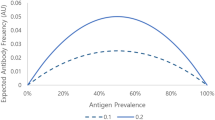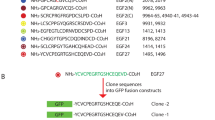Abstract
NATURALLY occurring antibodies to antigens of erythro-cytes, tissues such as liver, and microbes are invariably detectable in the serum of fully grown animals but are not found in the serum of the new-born. Whether these antibodies arise as a result of normal physiological maturation or as a result of inapparent immunization has puzzled immunologists for many years. There is evidence that the blood group and microbial antibodies may be formed as a response to ingested antigens, since their production has been prevented in some cases by rearing the animals in a germ-free environment. Germ-free chicks, for example, promptly developed antibodies to blood group B antigen after the oral administration of Escherichia coli 086, an organism with blood group B antigenic determinants1. The phenomenon of naturally occurring complement-fixing serum substances reactive with extracts of mammalian tissue, including an animal's own tissue, is not readily explained2,3. It is possible that these substances, which are serum globulins, are not antibodies formed in response to antigenic stimulation. When combined with tissue for which they have an affinity, they may conceivably be aggregated and thereby fix complement4.
This is a preview of subscription content, access via your institution
Access options
Subscribe to this journal
Receive 51 print issues and online access
$199.00 per year
only $3.90 per issue
Buy this article
- Purchase on Springer Link
- Instant access to full article PDF
Prices may be subject to local taxes which are calculated during checkout
Similar content being viewed by others
References
Springer, G. F., Horton, R. E., and Forbes, M., J. Exp. Med., 110, 221 (1959).
Kidd, J. G., and Friedewald, W. F., J. Exp. Med., 76, 543 (1942).
Muschel, L. H., Simonton, L. A., Wells, P. A., and Five, jun., E. H., J. Clin. Invest., 40, 517 (1961).
Kunkel, H. G., and Tan, E. M., Adv. in Immunol., 4, 351 (1964).
Gordon, H. A., Ann. N.Y. Acad. Sci., 78, 208 (1959).
Osawa, E., and Muschel, L. H., J. Immunol, 84, 203 (1960).
Toussaint, A. J., and Muschel, L. H., Nature, 183, 1825 (1959).
Atwood, R. P., Fed. Proc., 24, 505 (1965).
Mollison, P. L., Blood Transfusion in Clinical Medicine, third ed., 222 (C. C. Thomas, Springfield, Ill., 1961).
Muschel, L. H., and Treffers, H. P., J. Immunol., 76, 11 (1956).
Muschel, L. H., and Treffers, H. P., J. Immunol., 76, 1 (1956).
Toussaint, A. J., and Muschel, L. H., J. Immunol., 89, 27 (1962).
Howe, P. E., J. Biol. Chem., 53, 479 (1922).
Fahey, J. L., and Barth, W. F., Proc. Soc. Exp. Biol. and Med., 118, 596 (1965).
Jerne, N. K., Proc. U.S. Nat. Acad. Sci., 41, 849 (1955).
Author information
Authors and Affiliations
Rights and permissions
About this article
Cite this article
HOOK, W., TOUSSAINT, A., SIMONTON, L. et al. Appearance of Natural Antibodies in Young Rabbits. Nature 210, 543–544 (1966). https://doi.org/10.1038/210543a0
Issue Date:
DOI: https://doi.org/10.1038/210543a0
This article is cited by
-
Origin of cells reducing normal hemolysins in guinea pigs
Bulletin of Experimental Biology and Medicine (1974)
Comments
By submitting a comment you agree to abide by our Terms and Community Guidelines. If you find something abusive or that does not comply with our terms or guidelines please flag it as inappropriate.



